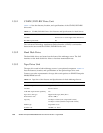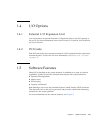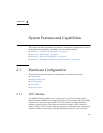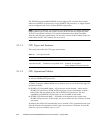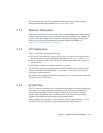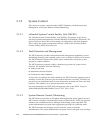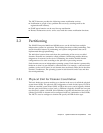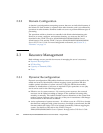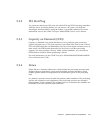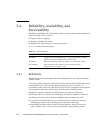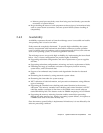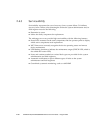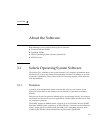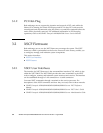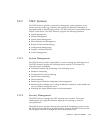
2-6 SPARC Enterprise M4000/M5000 Servers Overview Guide • August 2009
2.2.2 Domain Configuration
A domain is an independent computing resource that runs an individual instance of
the Solaris OS. Each domain is separated from other domains, and is not affected by
operations in other domains. Domains enable one server to perform different types of
processing.
The operations within a domain are controlled with Solaris administration tools.
However, to create, configure, and monitor domains, you must use the XSCF, as
described in the SPARC Enterprise M3000/M4000/M5000/M8000/M9000 Servers
Administration Guide and the SPARC Enterprise M3000/M4000/M5000/M8000/M9000
Servers XSCF User’s Guide. For more background on domains, see Section 3.1.1,
“Domains” on page 3-1.
2.3 Resource Management
Both midrange servers provide four means of managing the server’s resources:
■ Dynamic Reconfiguration
■ PCI Hot-Plug
■ Capacity on Demand (COD)
■ Zones
2.3.1 Dynamic Reconfiguration
Dynamic reconfiguration (DR) enables hardware resources on system boards to be
added and removed dynamically without stopping system operation. DR thus
enables optimal relocation of system resources. Using the DR function enables
additions or distributions of resources as required for job expansions or new jobs,
and it can be used for the following purposes.
■ Effective use of system resources – By reserving some resources, the reserved
resources can be added according to changes in the workload occurring daily,
monthly, or annually. This enables flexible resource allocations on the system that
needs to operate 24 hours a day, every day of the year in accordance with changes
in the amount of data and the workload.
■ Active replacement of system resources – If a failure occurs in a CPU for a domain
that has been configured with system resources of multiple system boards, the DR
function enables the faulty CPU to be isolated dynamically without stopping the
system. For details on DR, refer to the SPARC Enterprise
M4000/M5000/M8000/M9000 Servers Dynamic Reconfiguration (DR) User’s Guide



